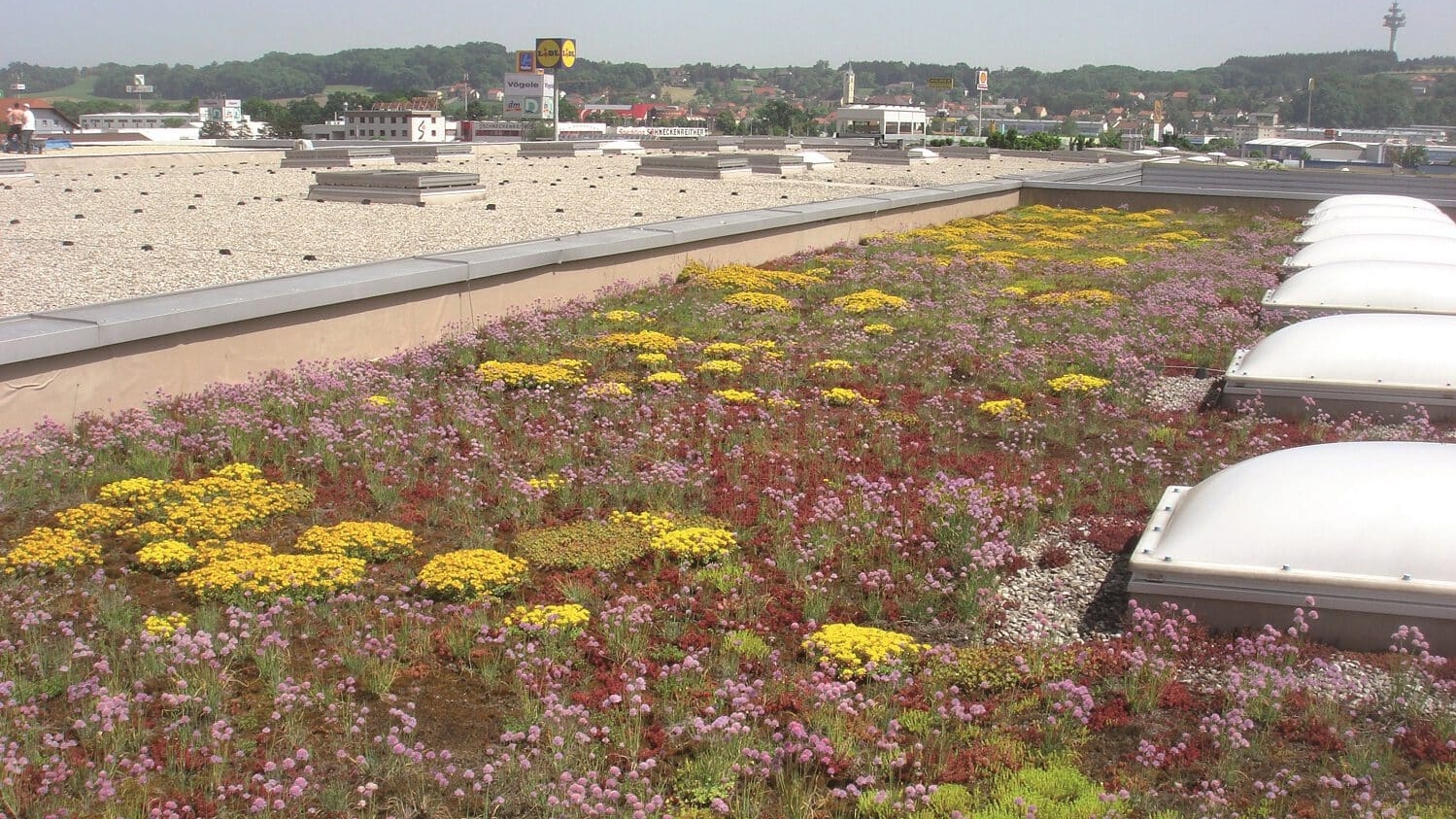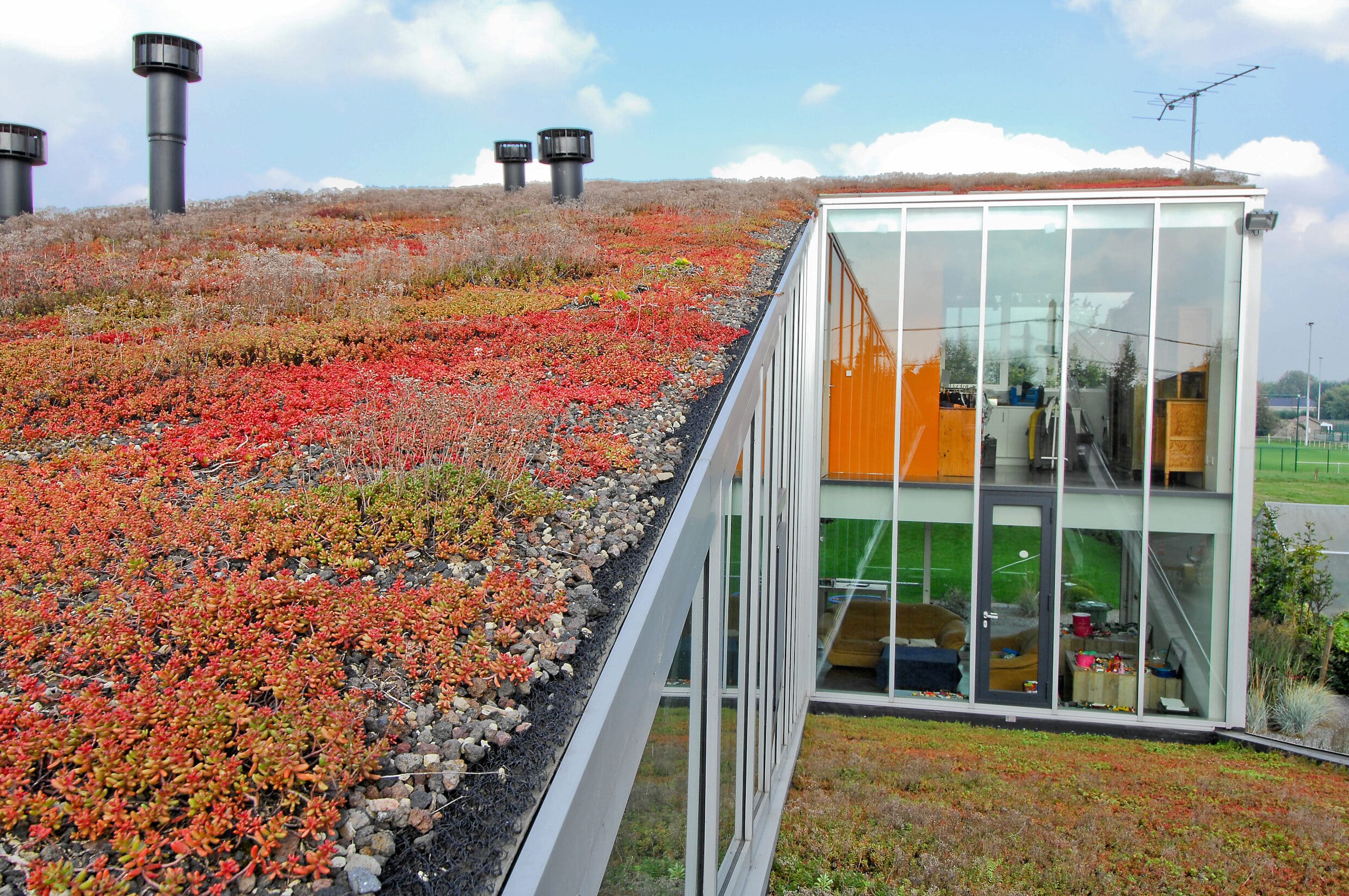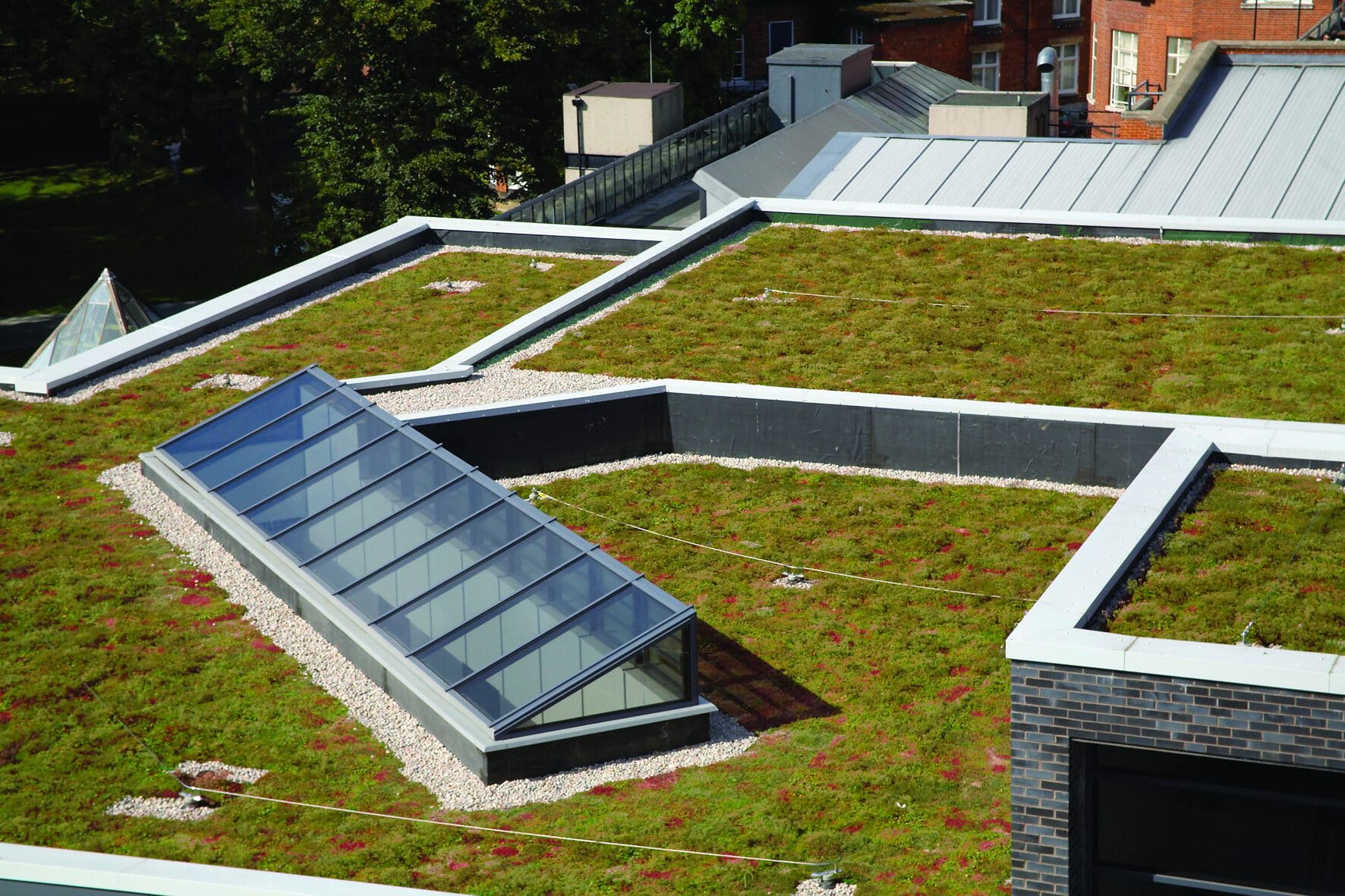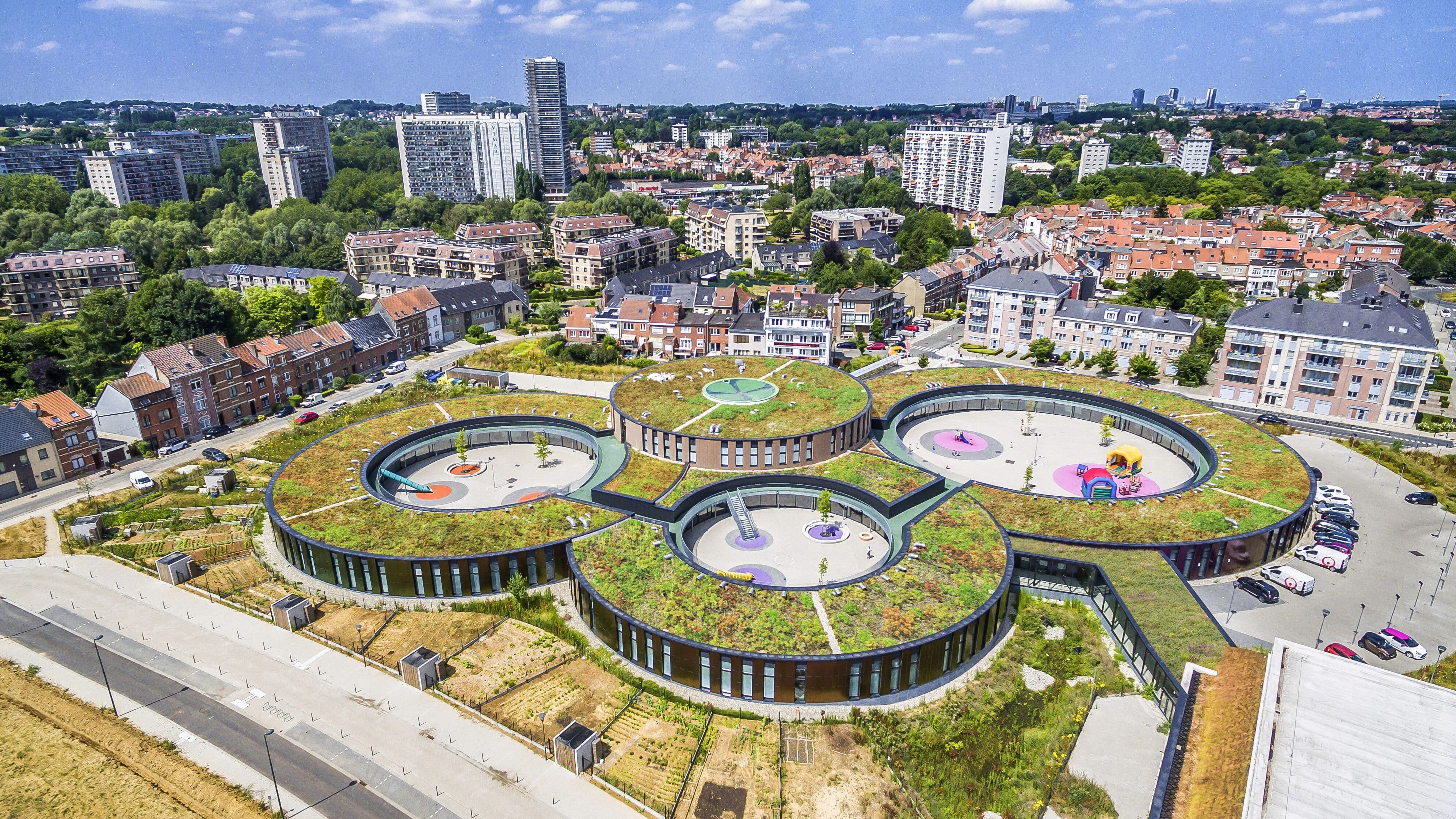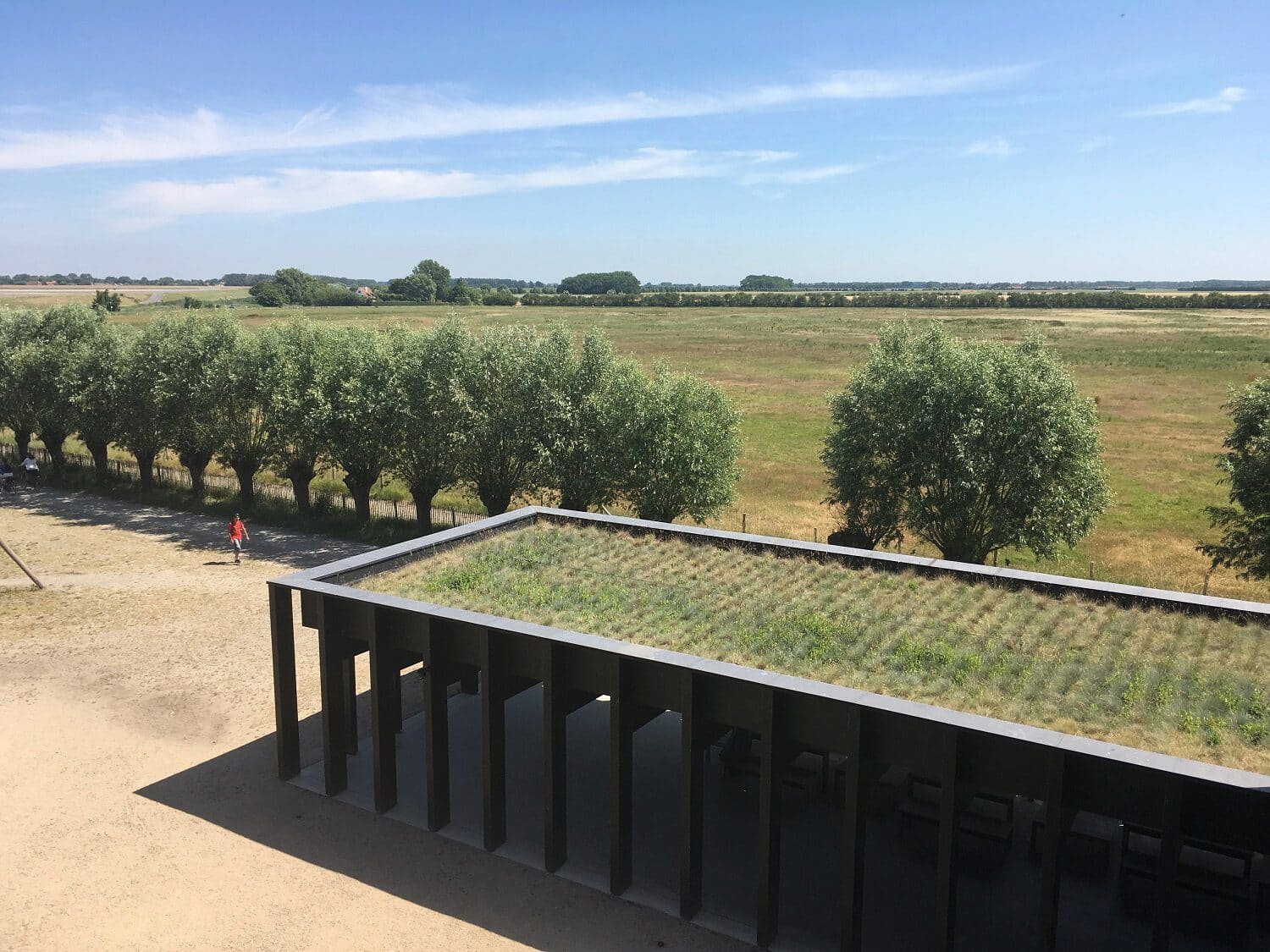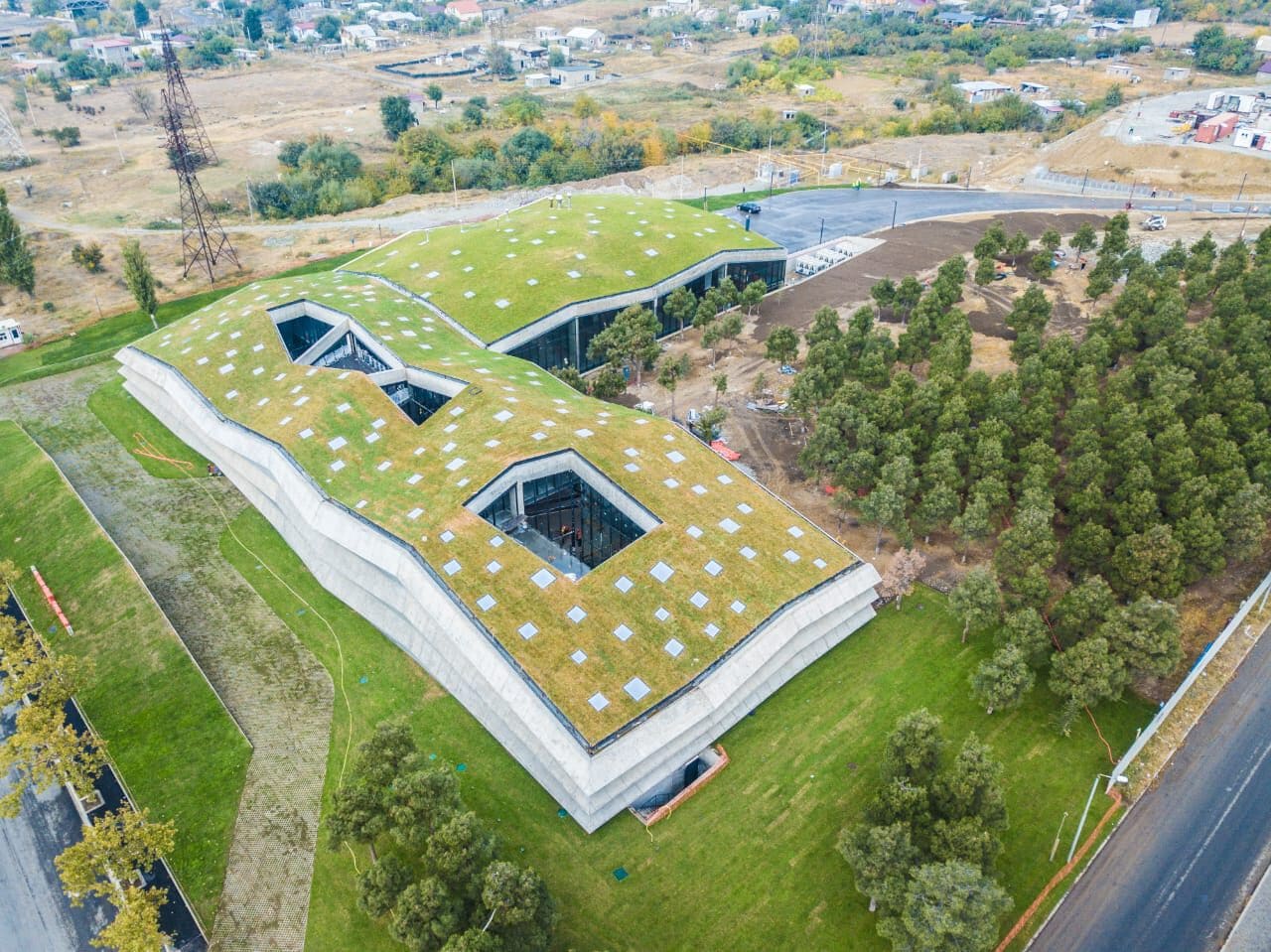The future of roofs is green
Roofs represent about 20–25% of the total urban surface area. What is particularly visible in satellite photos is that we are not making the most of our roofs yet: more often than not, they stay empty. At the same time, as cities continue to grow and expand, becoming warmer and noisier in the process, roofs are expected to go beyond their primary function of ensuring shelter against the elements. More than just “covers”, they need to contribute to the building’s energetic efficiency, sustainability, and overall reduction of their environmental impact. Green roofs are among the best solutions that address all these needs.
Put simply, green roofs are roofs that have plants growing on them. Also known as “vegetated roofs”, they consist of a roofing system with a layer of living plants placed over the waterproofing membrane. The aesthetic benefits of such a solution are obvious but there is much more to it. Adopting a green roof is a great way to ‘activate’ the roof, allowing it to save energy (and energy costs), reduce the urban heat island effect, manage stormwater, reduce noise levels, improve biodiversity and provide a good environment for social interaction and personal wellbeing while also offering sustainable design… and the list goes on.
Green roofs are here to stay
Green roofs have been popping up in urban landscapes around the world for several decades, but they have become more popular only recently. The first modern green roof systems were developed and marketed on a large scale in Germany in the early 1970s. Today, their role in the quest to reduce the impact of climate change in urban settings has become undeniable and that’s what truly boosts their popularity.
In Europe, many municipalities are encouraging the incorporation of green roofs through legislation and by offering financial support. In some regions, they are even becoming mandatory. In France, a new law from 2019 states that flat roofs of new-build commercial and industrial premises, warehouses, non-public hangars subject to commercial exploitation and new publicly-accessible covered parking areas in excess of 1,000 m² must include either solar panels or green roofs on at least 30% of the roof surface.
What type of vegetation can be grown on green roofs?
There are two main types of green roofs: extensive and intensive. Extensive green roofs use low growing vegetation such as sedum, which is very lightweight and only requires a shallow growing medium (about 5 to 10 cm), goes dormant in winter, has a good resistance to droughts and does not need to be watered or pruned. In short, it is extremely low-maintenance. Usually not accessible, extensive green roofs are most commonly used on flat roofs.
Intensive green roofs, also called ”rooftop gardens”, are more complex and need more maintenance. They require a deeper growing medium which allows them to accommodate a wider variety of plant options, including trees and shrubs, which may require an irrigation system, fertilization, pruning, etc. Intensive green roofs are typically accessible.
Benefits of green roofs
Both extensive and intensive green roofs offer many benefits for the environment, property owners and local communities. They improve air quality, producing more oxygen and absorbing carbon dioxide and other airborne pollutants, which translates into an overall positive effect on public health and wellbeing. They also help biodiversity by providing a natural habitat for plants, birds and beneficial insects such as pollinators (bumblebees, bees, butterflies, etc.)
Green roofs also have an important insulating effect, which means less energy is required to heat or cool the building. In the summer, they regulate heat, keeping the interior of the building cooler. In cold weather, they ensure that the building loses less heat. In addition to this thermal insulation effect, green roof systems also absorb sound and contribute towards the overall reduction of noise pollution caused by the urban environment.
A green roof installation also helps mitigate the ‘urban heat island effect’, a condition in which cities absorb and trap heat at higher rates than rural areas. This is achieved by returning moisture to the environment through evapotranspiration. In addition, the surface of the vegetation reflects more sunlight than standard roof formations, which further contributes to the cooling effect.
Improved stormwater management is another key feature of green roofing systems in urban landscapes. In cases of excessive rainfall, the plants and the substrates on green roofs absorb a certain amount of rainwater and then release it back slowly to the drainage system and into the atmosphere through evaporation. This relieves the pressure on sewage systems, minimizing the risk of flooding and erosion. The vegetation on green roofs also purifies runoff, rainwater, acting as a filter and contributing to a lower concentration of nitrates, phosphorus, and toxins.
Green roofs are also beneficial to the whole roofing system itself, significantly extending its lifespan. The vegetation layer acts as a natural barrier, providing extra protection from weather conditions such as hail, wind, extreme temperature fluctuations and UV rays, among others.
Last but not least, specifying a green roof system is a choice that improves the overall score of the building in sustainability rating systems such as BREEAM (Building Research Establishment Environmental Assessment Method) and LEED (Leadership in Energy and Environmental Design). These certifications confirms the environmental credentials of a high-performance building and, as a consequence, increase its market value.
How to design and install a green roof
Green roof can be installed both on new buildings or as part of a renovation project. Before choosing a green roof, however, you need to consider some crucial aspects, such as the roof slope, roof deck material and the structural loading capacity of the roof. On top of that, you need to take into account sun daylight and wind exposure, as well as roof accessibility and maintenance requirements. The choice of vegetation is another important factor, as plants with aggressive roots can cause damage to the entire roof assembly.
The waterproofing membrane is a key component in green roof design. Its main function is of course to keep the roof watertight and provide a durable substrate for the green roof system to thrive. Resistance to root penetration and robustness to cope with foot traffic during installation and maintenance are also crucial. Weight is another critical factor that can have a huge impact on the performance of a green roof. Lightweight, single-ply roofing membranes are therefore preferred over multi-layered systems that can add significant weight to the roof construction.
Elevate’s RubberGard EPDM and UltraPly TPO single-ply roofing membranes are robust yet lightweight, easy to install and maintain, making them ideal for sustainable building designs. Their excellent weathering performance and ability to withstand very high and very low temperatures translate into a roofing solution of outstanding durability. Elevate EPDM roofing membranes are also inert, which means they do not release toxic substances into the environment. The Elevate EPDM RubberGard EPDM and UltraPly TPO roofing membranes have successfully passed both the root penetration resistance test (EN 13948) and the FLL root penetration resistance test from the German Landscape Research, Development and Construction Society making them an excellent choice.
Green roofs are part of a sustainable approach to architecture that is here to stay. They offer a way of bringing nature back into our rapidly growing urban landscapes, helping to mitigate their environmental impact and improving the quality of life of its inhabitants. Conclusion? Let’s help them grow!
